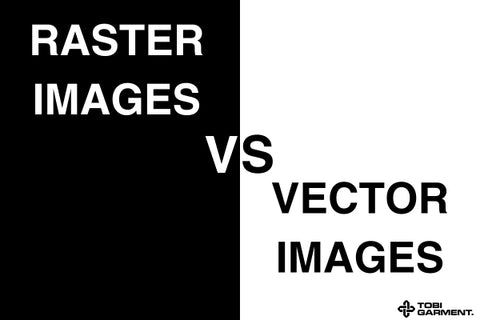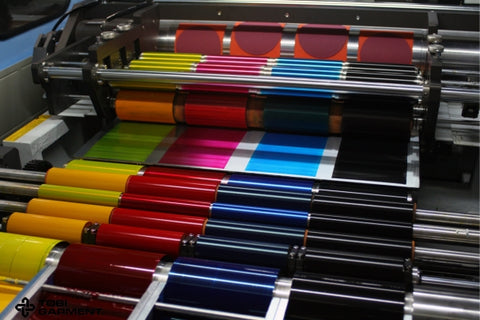
In the digital age, images are an integral part of our lives. From social media to websites, presentations to marketing materials, images play a crucial role in conveying information and engaging audiences. But not all images are created equal. There are two primary types: raster and vector images. Understanding the differences between these two formats is essential for anyone working with digital visuals.
Understanding the Basics of Raster and Vector Images
Raster and vector images are fundamentally different in how they are constructed and how they behave.
What are raster images?
Raster images are composed of a grid of pixels, or tiny dots of color. Each pixel has a specific color, and the combination of these pixels creates the image. Think of a raster image like a mosaic, where the overall picture is formed by the individual tiles.
What are vector images?
Unlike raster images, vector images are created using mathematical equations and algorithms. Instead of pixels, they are composed of paths, lines, and shapes that are defined by their mathematical properties.
This means that vector images can be scaled to any size without losing quality, as the computer can recalculate the paths and shapes based on the new dimensions.
Read more: Eco-Friendly Screen Printing: Your Guide to Sustainable Style
Key differences between raster and vector images
- Scalability: Vector images can be scaled up or down without losing quality, while raster images may become pixelated when enlarged.
- File size: Raster images tend to be larger in file size, especially when they have high resolutions. Vector images, on the other hand, are typically much smaller.
- Editing: Vector images are easier to edit and manipulate, as changes can be made to individual paths and shapes without affecting the entire image. Raster images require more complex editing techniques to modify individual pixels.
- Usage: Raster images are ideal for photographs and realistic images, while vector images are better suited for logos, illustrations, and simple graphics.
Choosing the Right Image Format for Your Needs
The choice between raster and vector images depends on your specific needs and the intended use of the image.
When to use raster images
- Photographs: Raster images are the best choice for capturing and displaying realistic images with fine details.
- Scanned images: If you have scanned physical images, they will likely be in a raster format.
- Digital paintings: Raster images are often used for digital painting and other artistic applications.
When to use vector images
- Logos: Vector images are perfect for creating logos that can be scaled to any size without losing quality.
- Illustrations: Simple illustrations and line drawings can be created using vector graphics.
- Typography: Vector images are ideal for creating text-based graphics and typography.
Editing and Manipulating Raster and Vector Images
Both raster and vector images can be edited and manipulated using various software tools.
Editing raster images
- Photo editing software: Programs like Adobe Photoshop, GIMP, and Affinity Photo are designed for editing raster images.
- Image manipulation: You can crop, resize, adjust colors, and apply effects to raster images.
Editing vector images
- Vector graphics software: Adobe Illustrator, Inkscape, and CorelDRAW are popular choices for editing vector images.
- Path manipulation: You can modify paths, lines, and shapes to create different designs.
Converting between raster and vector formats
- Vectorization: You can convert a raster image into a vector image using vectorization software. This involves tracing the outlines of the image and converting them into vector paths.
- Rasterization: You can convert a vector image into a raster image by specifying a resolution and output format. However, this may result in a loss of quality if the image is scaled down.
Read more: A Step-by-Step Guide to Screen Printing on Wood
Optimizing Raster and Vector Images for the Web
To ensure your images load quickly and display properly on the web, it's important to optimize them.
Compressing raster images
- Lossy compression: Use lossy compression formats like JPEG to reduce file size without significantly affecting image quality.
- Lossless compression: For images that need to retain their original quality, use lossless formats like PNG or GIF.
Optimizing vector images for web display
- Simplify paths: Reduce the complexity of vector paths to minimize file size.
- Use SVG format: SVG is a web-friendly format for vector graphics.
Improving image loading times
- Optimize image dimensions: Make sure your images are the appropriate size for their intended use.
- Use lazy loading: Defer loading images until they are visible on the screen.
- Consider image optimization tools: There are many online and offline tools available to help you optimize your images.
Read more: Screen Printing vs Digital Printing for Custom T-Shirts
Additional Considerations for Raster and Vector Images
Image resolution and DPI
- Raster images: Resolution is measured in dots per inch (DPI). Higher DPI means more detail.
- Vector images: Resolution is not relevant for vector images, as they can be scaled without losing quality.
Color profiles and color management
- Color profiles: Ensure that your images are using the correct color profile to maintain color accuracy.
- Color management: Use color management tools to ensure consistent color reproduction across different devices.
Copyright and licensing
- Image rights: Be aware of copyright laws and obtain necessary permissions before using images.
- Licensing: Consider licensing options for stock images or images created by others.
Read more: Top Hoodie Print Placements: Make Your Hoodie Stand Out
Conclusion
Raster and vector images are both valuable tools for digital design and communication. By understanding the differences between these formats and choosing the right one for your needs, you can create high-quality, engaging visuals that effectively convey your message.
FAQ
What is the difference between raster and vector images?
Raster images are composed of pixels, while vector images are created using mathematical equations.
When should I use raster images?
Raster images are best for photographs, scanned images, and digital paintings.
When should I use vector images?
Vector images are ideal for logos, illustrations, and typography.
Can I convert a raster image to a vector image?
Yes, you can use vectorization software to convert a raster image into a vector. However, this may involve manual tracing or the use of automated tools.
Read more related posts from Tobi Garment:



